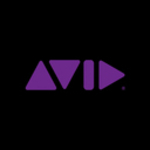What is our primary use case?
We use Workfront for project management, which also includes internal company communications. It acts as an intermediary with the CRM system, which tracks all the emails and other communications, enabling us to foster connections among the users.
How has it helped my organization?
Workfront project management gives us a bird's eye view from a marketing perspective and helps us oversee our workload. We can monitor the capacity of people who produce assets within the company and keep projects on schedule.
We can keep our promises and deliver projects on time, which is essential for any business. It's a cliche thing to say, but time is money. To build trust, we must ensure everything is completed on time. Workfront has embedded tools for tracking working hours, schedules, project timelines, utilization rates, and reports. It's vital for every management team to prepare quarterly, monthly, or even weekly reports.
Overall, it makes our users' lives a little easier and simplifies project administration. The benefit is an overview that provides media efficiently and always accessible. Access, usage, details, and trustworthiness are critical with data and analytics.
What is most valuable?
Workfront's most valuable feature depends on who is using it. I'm an advanced technical user who is supporting others, and I'm also an admin managing the product. I'm looking at it from that perspective. How are users working with the product? Is it easy for them? Is it helping them? Are there any bottlenecks of administration? Is it easy to access? These kinds of questions usually come into play about whether a product is useful or applicable to everyone.
I'm looking at the average user logging into Workfront who is attempting to build a new project that might last months or years. We're taking headcounts of who is working on each individual asset, input, and task. Ease of access is always a critical question. When somebody clicks on it, they can see everything right at their fingertips. They click on the project, and all their data is there. Ease of access is the area where Workfront excels.
Detail is another thing. I've worked with other project management systems that have subpar reporting. You can't pull out certain types of data from the system and provide it in an orderly fashion using a dashboard or a report. It's difficult to deliver that information to your stakeholders if you don't have the data ready.
I also like Workfront's integration. The solution integrates natively with other systems. It's easy to connect Workfront to any product that has a customer service database, such as a CRM or service ticket management solution.
What needs improvement?
Workfront's reporting features are robust, but there is also room for improvement. The dashboard could be updated because it's raw and doesn't have nice graphics. We're in marketing, so we incorporate a lot of design elements into our daily work.
Our product and graphic designers are working with various Adobe products, but Workfront has a no-frills interface. It's a useful tool with everything we need, but it could be a little more attractive and present information in a polished way. It's a web interface, so it's accessible, but the appearance could be a little slicker.
I'm always stunned by the dashboards in other products. For example, Microsoft Power BI is focused on producing analytics, reports, and dashboards. It produces some eye-catching dashboards that look impressive. it's kind of straight to the point, but at least it's pleasing to the eye. Dashboards have come a long in the last 10 or 15 years.
For how long have I used the solution?
I've used Adobe Workfront for a little over three years.
What do I think about the stability of the solution?
Workfront is stable. In the last three years, I've experienced an outage maybe once or twice for about half an hour. They have notification boards online where you can check the server availability. If you have any kind of issue, you can check the dashboard. If it doesn't resolve, you can contact tech support.
What do I think about the scalability of the solution?
Workfront is an enterprise solution. You can always add more projects and users, and it handles large volumes of data well. Our usage of Workfront is large compared to other companies. We've had discussions with Adobe about migrating, merging, and automating various processes. We use a ton of data and have thousands of projects.
How are customer service and support?
I rate Adobe support nine out of 10. They're at the top of their game. When you contact them, they pick up the phone and give you the right information. They understand what you're saying and offer regional support in multiple languages.
Their support teams are organized regionally, so if you're in the United States, you won't get someone in the Middle East or Australia. They work quickly, and the people working behind the scenes are advanced users. You won't get a general tech support engineer who lacks knowledge about the specific product you use. Usually, a Level 1 engineer can resolve your issue.
How would you rate customer service and support?
Which solution did I use previously and why did I switch?
Workfront was in place when I joined this company, but I have worked with a few other project management tools. I've used Jive and various Kanban boards for scrum methodologies.
A new generation of project management solutions has emerged. People were using different methodologies a decade ago. Project management functions were embedded in other solutions, but there weren't all these standalone products for that.
Asana and Trello are popular. I always see commercials for Monday.com. I have tried all these but not at the enterprise level. It's one thing to use a tool for a company with 20-30 people, but it's a whole different ballgame when you're managing a thousand or 5,000 people. Workfront is a robust tool, and that's what sets it apart from Asana, Trello, or Monday.com. It's a better choice for overall functionality, but some platforms have nicer graphics. We're also using several Adobe products, so it makes sense to adopt it as our project management tool.
How was the initial setup?
Workfront was already deployed when I joined. A few people who were there at the time of deployment are still with the company, but they're in management so they aren't the technical staff who understand the product at that level. So I came into the company to help ensure that every user is happy and the product is working.
The solution requires maintenance. We've got a large database, and it's imperative to keep the data as clean and efficient as possible to make the system work. You have to maintain certain processes on a quarterly basis or at least twice yearly. Periodically, you need to purge inactive users and delete information that the system isn't using.
It creates a snowball effect if you don't touch the system for a year. You'll end up with a trash can of data that causes problems in the system and creates confusion. The users don't understand how this impacts their life. They might be working on a workflow and using some fields with incorrect information, so the report at the end of the financial year will have incorrect data. Bad data can jam you up if you don't maintain the system.
What's my experience with pricing, setup cost, and licensing?
Workfront's general price is available on the company's website, but Adobe is always trying to keep customers happy, so they try to work out the best deals. A company can negotiate a price depending on the services and objects it plans to use within Workfront because the solution comprises various modules that you can tailor to your needs. For example, if you aren't using Workfront to do analytics, you don't need to purchase the analytics tool.
The price varies from company to company, but I think it's reasonable in our case. Everyone wants the best stuff for the lowest price. That's how the world works. Adobe is moderately expensive, and all its products are trending upward in price.
Adobe purchased Workfront in the past year, and they're putting work into developing the platform, so I expect the price to rise. It isn't cheap, but it's reasonable for the value it provides. It isn't Monday.com where you pick a license with a set price, and you've got a project manager.
What other advice do I have?
I rate Adobe Workfront eight out of 10. It's a strong eight because people view it in different ways. Some people like to see nice graphics while others want detailed data. Some people just want to use it to work. You can customize Workfront, but there are limitations. The bottom line is that Workfront is a good pick if you're looking for a robust, enterprise-level tool you can work with.
Depending on the size of your company and its needs, you can try other platforms. If you're focused on process management and want to see process diagrams, you can use different tools. However, if you need integration and connections with storage, etc., Adobe provides you with all the solutions
You need to choose a product that fits your needs, so it's essential to put time and effort into understanding your company's requirements and budget. How many users do you have and what are their needs? What kind of work are they doing daily? Do I need project management or am I adopting a project management tool because it's trendy? Some companies choose a tool thinking that it will serve a purpose, but they realize that they don't need it. They're looking for something else, but they don't know it.
Do some research online and contact a sales rep who can consult with you. Of course, they want to sign up as many people as possible to generate revenue for Adobe. Still, at the end of the day, it's important for them to understand your needs. If you don't understand your own needs, you can't tell them. They're going to provide you with something else that you don't need. It's the company's responsibility to ensure you do this kind of due diligence.
Disclosure: PeerSpot contacted the reviewer to collect the review and to validate authenticity. The reviewer was referred by the vendor, but the review is not subject to editing or approval by the vendor.























